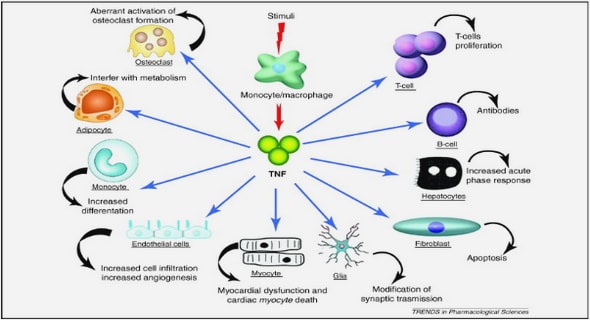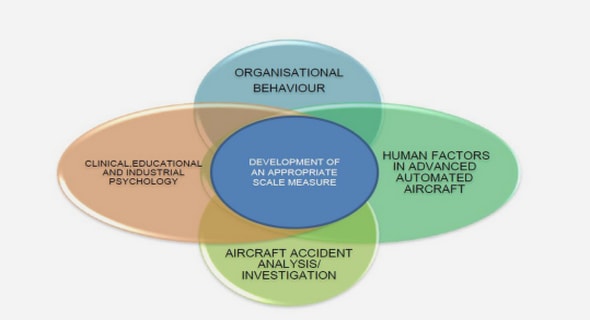Get Complete Project Material File(s) Now! »
Direct and indirect photodegradation of atrazine and S-metolachlor in agriculturally impacted surface water and associated C and N isotope fractionation
Limited knowledge of photodegradation-induced isotope fractionation hampers the application of compound-specific isotope analysis (CSIA) to trace pesticide degradation in surface waters. Here, we investigated carbon and nitrogen isotope fractionation during direct and indirect photodegradation of the herbicides atrazine and S-metolachlor in synthetic water mimicking agriculturally impacted surface waters containing nitrates (20 mg L–1) and dissolved organic matter (DOM, 5.4 mg C L–1). Atrazine and S-metolachlor were quickly photodegraded by direct and indirect pathways (half-lives <5 and <7 days, respectively). DOM slowed down photodegradation while nitrates increased degradation rates. Transformation products analysis showed that oxidation mediated by hydroxyl radicals (HO•) predominate during indirect photodegradation. UV light (254 nm) caused significant C and N isotope fractionation, yielding enrichment factors = 2.7 ± 0.3 and 0.8 ± 0.1‰ and = 2.4 ± 0.3 and –2.6 ± 0.7‰ for atrazine and – S metolachlor respectively.
In contrast, photodegradation under simulated sunlight led to negligible C and slight N isotope fractionation. As the radiation wavelength influenced the direct photodegradation-induced isotope fractionation, the use of simulated sunlight is recommended to evaluate photodegradation pathways in the environment. Since C and N isotope fractionation patterns for atrazine and S-metolachlor photodegradation differed from those reported for biodegradation and hydrolysis, CSIA offers new opportunities to distinguish between photodegradation and other dissipation pathways in surface waters.
This chapter is an edited version of: Drouin, G., Droz, B., Leresche F., Payraudeau, S., Masbou, J. & Imfeld, G. Direct and indirect photodegradation of atrazine and S-metolachlor in agriculturally impacted surface water and associated C and N isotope fractionation submitted in Env. Sci. & Tech. G. D & B.D. contribute at all stages of this chapter.
The ever-increasing use of pesticides, mainly for agricultural purposes, has led to ubiquitous contamination of surface waters,1 which may affect environmental biodiversity and human health.2 Understanding pesticide transformation in surface waters is thus crucial for predicting their persistence, the formation of transformation products (TPs) and mitigating detrimental effects of further pollution. While biodegradation is an important process of pesticide degradation in the environment, photodegradation also plays a prominent role in surface waters.3 Pesticide photodegradation is compound- and condition-specific, which often limits the interpretation of photodegradation kinetics and pathways in various types of surface water.4, 5 In particular, the influence of the hydrochemical composition, the nature of dissolved organic matter (DOM) as well as the light spectrum on pesticide photodegradation remains poorly understood.6
Pesticides undergo photodegradation by direct and indirect pathways. During direct photodegradation, pesticide molecules absorb light resulting in bond cleavage. Indirect photodegradation involves reactions with short-lived reactive intermediates, such as hydroxyl radical (HO•) or DOM excited triplet states (3DOM*).7 Nitrate photolysis produces HO• that can react with pesticides in surface waters, even at nitrate concentrations as low as 0.02 mg L– 1.5 DOM has both inhibitory and/or photosensitizing effects, depending on its concentration and composition.8 On the one hand, DOM absorbs light, reducing direct photodegradation of pesticides and HO• generation from nitrate photolysis. On the other hand, upon absorbing light, DOM generates 3DOM* that is the precursor of 1O2 in surface waters. Both 3DOM* and 1O2 can react with pesticides. DOM is also a major sink of HO• in surface waters, reducing HO• reactions with pesticides. DOM can also reduce pesticide oxidation intermediates back to the parent compounds, and limit pesticide photodegradation.9 The effects of DOM on pesticide photodegradation are, however, compound-specific and involve mostly unknown mechanisms.10 While the combined effect of nitrates and DOM on pesticide photodegradation is relevant for surface waters in agricultural areas, few studies on the subject have been carried out to date.
The ability of compound-specific isotope analysis (CSIA) to specifically evaluate micropollutant degradation, including pesticides and pharmaceuticals, has already been exploited in diverse environmental compartments.12 Pollutant molecules displaying different ratios of light over heavy isotopes are degraded at slightly different rates, resulting in a kinetic isotope effect (KIE) quantifiable by CSIA.13 However, dilution processes, such as transport or sorption, generally do not alter stable isotope ratios (e.g., 2H/1H, 13C/12C, and 15N/14N) within pollutant molecules.14 As the KIE reflects the rate-limiting step of the involved pathway, each degradation pathway displays a specific isotope fractionation patterns, which may allow to differentiate co-occurring degradation processes in the environment. For example, CSIA was used to distinguish the contribution of direct photodegradation from other processes, including biodegradation, abiotic oxidation and dilution, affecting the dissipation of the pharmaceutical diclofenac in riverine systems.15 Although CSIA has been recently applied to characterize pesticide degradation in the environment,16 little is known about stable isotope fractionation of pesticides during direct and indirect photodegradation in surface waters.
To the best of our knowledge, only Hartenbach et al.17 have evaluated isotope fractionation for direct and indirect photodegradation of atrazine under specific conditions of irradiation and water chemistry. However, isotope fractionation may depend on the irradiation source and the DOM nature. Negligible fractionation in 13C of the antibiotic sulfamethoxazole was observed in experiments with UV-C light, while significant isotopic enrichment factor ( = –4.8 ± 0.1‰) was observed when UV-B and UV-A prevailed.18 Slight C isotopic enrichment factor ( = –0.7 ± 0.2‰) has also been observed during direct photodegradation of diclofenac under sunlight.15 Differences in 13C vs 15N fractionation trends suggest distinct pathways associated with photodegradation of the nitrile herbicide bromoxynil when irradiated either with a UV lamp or exposed to sunlight under environmental conditions.19 Isotopic enrichment factor may also depend on the nature of DOM and its propensity to favor HO• and 3DOM* short-lived reactive intermediates oxidation, as observed for methyl tert-butyl ether and ethyl tert-butyl ether.20 Although these results emphasize the potential of CSIA to evaluate photodegradation in laboratory and in natural systems, isotopic enrichment factor to characterize pesticide photodegradation in agriculturally impacted surface waters are currently missing.
In this context, the purpose of this study was to examine typical patterns of photodegradation and associated isotopic enrichment factor for atrazine and S-metolachlor in agriculturally impacted surface waters. We irradiated atrazine and S-metolachlor with a simulated sunlight ( from 270 to 720 nm) under hydrochemical conditions representative of agriculturally impacted surface waters (DOM = 5.4 mg C L–1; NO3– = 20 mg L–1). We hypothesized that the hydrochemical composition of surface waters differently affect pesticide photodegradation and associated isotopic fractionation through direct and indirect pathways. In particular irradiation of nitrates and DOM may lead to the formation of short-lived reactive intermediates controlling underlying photodegradation pathways. Direct and indirect photodegradation of pesticides were thus tested, separately and concomitantly, in the presence of nitrates and DOM. C and N isotopic enrichment factor were derived for direct and indirect photodegradation of atrazine and S-metolachlor. Complementary experiments were conducted with an ultraviolet (UV) light ( = 254 nm) to evaluate the influence of irradiation wavelength on C and N isotopic fractionation during pesticide photodegradation.
Materials and method
Chemicals and preparation of solutions
All chemicals were at least HPLC grade (>97%) (detailed in Appendix A (AA)). Atrazine and S-metolachlor (Pestanal, >99.9%) stock solutions were individually prepared at 5 g L–1 in dichloromethane (DCM) and aliquots were stored at –20°C in brown glass vials. Before irradiation, pesticide stock solutions were spiked and stirred for one hour, until complete DCM volatilization. Suwannee River Fulvic Acid (SRFA – 2S101F) was obtained from the International Humic Substances Society (IHSS) and selected as a source of DOM representative of headwater rivers.20 Stock solutions of SRFA were prepared at a concentration of 50 mg L–1 by dissolving 10 mg of SRFA in 100 mL of ultrapure water (UW; Resistivity >15MΩ, dissolved organic matter (DOM; <0.2 mg C L–1), followed by 15 min sonication (Branson 5510, 40 kHz). The solutions were filtered through sterile 0.22 m pore diameter cellulose acetate membranes and stored at 4°C in brown glass vials. The synthetic surface water was prepared to target the ionic composition of typical soft surface waters.
Experimental section
Atrazine and S-metolachlor were selected as representatives of widely used and ubiquitously detected triazine and chloroacetanilide pesticides,1 and based on existing degradation rates (Table 2.1). Direct photolysis experiments were carried out independently for atrazine and S-metolachlor in UW with a 50 mM phosphate buffer (KH2PO4/Na2HPO4) at = 7.9 ± 0.2, as it has no significant effects on photodegradation rates and isotope fractionation.22 The effect of nitrates on pesticide photodegradation was investigated in buffered synthetic water by adding 331 ± 2 M of sodium nitrate salts (NO3– = 20 mg L–1), considered as representative of agriculturally impacted surface waters in Europe.23 The effect of DOM was studied by adding 5.4 ± 0.2 mg C L–1 of SRFA considered as a representative concentration of rivers worldwide.24 The concomitant effect of nitrates and DOM was investigated in synthetic water, spiked with sodium nitrates, SRFA and atrazine(5 M) or S-metolachlor (3 M) (AA, Table A1). DIR254 refers to direct photodegradation experiments conducted with a low-pressure mercury lamp (LP Hg; Philips, TUV 6W G6T5 – = 254 nm). DIR, NIT, SRFA, and TOT stand for irradiation conditions under simulated sunlight to test direct photodegradation (DIR), the effect of nitrates (NIT), dissolved organic matter (SRFA), and the combined effect of nitrates and dissolved organic matter (TOT), respectively.
Experiments were conducted in a 500 mL quartz tube (5 cm diam.) beyond 90% degradation of atrazine and S-metolachlor, with an irradiation duration from 7 to 600 hours. Aliquots from 15 to 200 mL were sequentially collected during the experiments. No significant degradation (<5%) in sterile and dark controls for all experimental conditions indicated insignificant hydrolysis and biodegradation during the photodegradation experiments. Photo-bleaching of DOM by HO• only slightly decreased the initial DOM content (<18%) after more than 310 h of irradiation (AA, Figure A1). Irradiation conditions in experiments with DOM were thus assumed constant.
Direct and indirect irradiations were carried out under simulated sunlight with a stand-alone lighting system (Sutter Instrument® – Lambda LS) fitted with a 300 W xenon (Xe) arc lamp (Cermax® – PE300BUV). A liquid optic fibre transmitted the light to a quartz tube covered with an aluminium foil, with a cut-off of ultra-violet (UV) radiations below = 270nm. The light spectrum obtained through the quartz tube, characterized with a calibrated spectroradiometer ILT 900C (International Light®), was in the range 270 to 720 nm. The mean photon fluence rate was estimated to be 7 E m–2 s–1 in the 290 to 400 nm range using a p-nitroanisole (PNA; 30 M)/pyridine (10 mM) actinometer system prepared as previously described.25 Up to date values of quantum yields independent from wavelength for PNA, = 3.19×10–3 mol E–1 were used (detailed in AA).26 Due to long irradiation times, fluctuations of light intensity were monitored for the ranges UVA (320< <400 nm), UVB (280< <320 nm) and visible light (VIS, 360< <830 nm) using a calibrated SOLAR® light PMA2200 radiometer. Xe arc lamps were systematically replaced when the total light intensity dropped or whenever shift in the UVA/UVB/VIS ratios exceeded 5% of the original value (AA, Table A2).
The effect of the irradiation wavelength on direct photodegradation of pesticides was examined using a light-proof box with black material equipped with the LP Hg lamp providing a monochromatic light source ( = 254 nm). Open beakers in borosilicate type 3.3 were filled with 50 mL of buffered solution and spiked either with atrazine (90 M) or S-metolachlor (70 M). Beakers were placed into the light-proof box, irradiated on the top, and sequentially removed to determine pesticide degradation rates. Light intensity within the box was homogeneous (83<Iaverage<121%; AA, Figure A2). Control experiments without pesticides showed no cross-contamination. In this case photon fluence rate was not determined since these experiments were solely designed to evaluate the effect of the irradiation wavelength on atrazine and S-metolachlor isotope fractionation induced by photodegradation and not to derive degradation rates.
Analytical section
Pesticide extraction. Solid phase extraction (SPE) of pesticides was carried out using SolEx C18 cartridges (1 g, Dionex®, CA, USA) and an AutroTrace 280 SPE system (Dionex®, CA, USA) as described elsewhere.27 This procedure led to quantitative extraction (100%) 0.2‰.27 |Δ 13 | = | 13 − − 13 − | = 0.6 ± 0.2‰ and |Δ 15 | and did not result in significant C and N stable isotope fractionation for atrazine and S- metolachlor ( =0.3± Chemical analysis and pesticide quantification. The ionic composition of irradiated solutions was determined by ion-chromatography (Dionex ICS-51000) for main anions and cations and by TOC analyzer (Shimadzu TOC-V CPH) for the carbon content in DOM. was measured using a 350i WTW -meter and a SenTix® electrode. Absorption spectra of pesticides, NIT and DOM solutions were measured using a UV-VIS Schimadzu UV 1700 aover the range 200 to 500 nm with a 1 nm resolution or taken from the literature whenever available (AA, Figure A3).
Table of contents :
Chapter 1 General introduction
Context
Pesticide sources and surface water contaminants
Pesticide transport and interactions from diffuse sources to surface waters
Atrazine and S-metolachlor as examples of surface water contamination
Pesticide abiotic degradation pathways in the water column
The sediment–water interface as a reactive interface in the surface water
Pesticide exchange and degradation at the hyporheic zone (HZ)
Tracking pesticide degradation in rivers
Compound-Specific Isotope Analysis (CSIA) to track in situ degradation
Research priorities and implications
Thesis Goal and Objectives
Thesis Outline
References
Chapter 2. Pesticide extraction from soil and sediments for compound-specific isotope analysis (CSIA)
Abstract
Introduction
Materials and methods
Sampling location
Sediment collection and characterization
Selection of the extractant
Sample preparation for method validation
Optimized extraction procedure
Pesticide quantification and compound-specific isotope analysis (CSIA)
Results and discussion
Selection of the extractant
Extraction method validation
Further improvements
Environmental implications
References
Chapter 3. Direct and indirect photodegradation of atrazine and S-metolachlor in agriculturally impacted surface water and associated C and N isotope fractionation
Abstract
Introduction
Materials and methods
Chemicals and preparation of solutions
Experimental section
Analytical section
Data Analysis
Results and discussion
Effects of the hydrochemistry on the photodegradation rates under simulated sunlight
Formation of phototransformation products
C and N isotope fractionation to trace atrazine and S-metolachlor photodegradation
Environmental Implications
References
Chapter 4. Phase-transfer and biodegradation of acetochlor and S-metolachlor in water–sediment
systems
Abstract
Introduction
Materials and methods
Sediment sampling and characteristics
Experimental set-up
Control experiments
Pesticide extraction and quantification
Compound-specific isotope analysis (CSIA)
Suspect screenings of transformation products
Phase-transfer and biodegradation modelling
Results and discussion
Dissipation kinetics and isotope fractionation
Water–sediment phase-transfer and implications for interpreting degradation kinetics
Water–Sediment Phase-Transfer and Implications for Interpreting Isotope
Signatures.
Pesticide degradation pathways
Environmental implications for water–sediment studies
References
Chapter 5. Organic pollutant biodegradation at the sediment–water interface in a bench-scale river channel: insights of compound specific isotopes analysis (CSIA)
Abstract
Introduction
Materials and methods
Sediment characterizations
Batch sorption and biodegradation experiments
Bench-scale river channel
Dynamic biodegradation experiment
Caffeine extraction and quantification
Compound-specific isotope analysis (CSIA)
Flow reactive transport modelling
Results and discussion
Caffeine sorption and degradation batch experiments
Influence of water flow on the depth of the oxic layer in sediment
Influence of water flow on caffeine biodegradation at the SWI
Environmental implications and perspectives
References
Chapter 6. Persistence of S-metolachlor in rivers: Insights from compound-specific isotope analysis (CSIA)
Abstract
Introduction
Materials and methods
Catchment description
S-metolachlor applications
Sampling locations
Continuous sampling
Grab sampling
S-metolachlor extraction and quantification
S-metolachlor loads and mass balance
S-metolachlor compound-specific isotope analysis (CSIA)
Results and discussion
Catchment hydrological response
Off-site transport of S-metolachlor
S-metolachlor dissipation along the river during the season
Point versus non-point sources apportionment
S-metolachlor isotope signature along the river
Degradation of S-metolachlor in the river reach
Potential of the CSIA approach
Environmental significance
References
Chapter 7. General conclusion
Introduction
A compartment system
Key findings for the sediment–water interface
Implications
References
Chapter 8. Perspectives and implications


